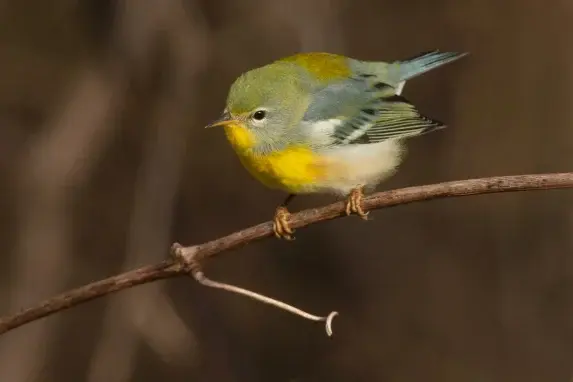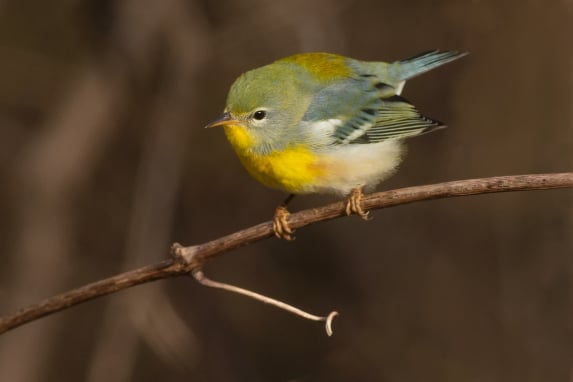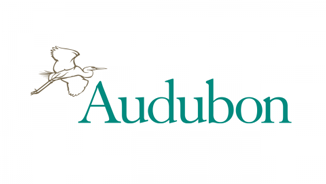
Posted December 1st 2020
What Happens When Birds Collide with Windows?

Posted December 1st 2020
What Happens When Birds Collide with Windows?
Windows provide countless benefits; they let natural light into our homes, allow us to get a sneak peek of the weather and remind us to stop and admire the natural world. However, it’s ironic that the very windows that allow us to admire nature can also have deadly consequences for the birds that we share this earth with. In North America alone, over 1 billion birds will die each year after colliding with windows. Further research has shown that, aside from cats, window collisions kill more birds than all other hazards, like oil spills, wind turbines, airplanes and cars, combined.
We know why birds hit glass: decades of research indicate that birds don’t perceive glass like we do, and that there are many factors that affect bird vision. Similarly, we now know that certain birds, especially those that are migrating, are at a much higher risk of colliding with windows as they pass through unfamiliar areas. Migratory and local birds that collide with windows typically die because of the impact.
But, what about the birds that manage to survive a window strike? What happens to them? We’ve collected information from our conservation partner FLAP Canada, and additional resources, to help you understand not only what happens when birds collide with windows, but also what you can do to help prevent future bird collisions at home and in your community.
Helping Birds After a Window Collision
Fortunately, there are a variety of steps you can take to help birds that are injured following a window collision. If you do find a bird that can be rehabilitated, FLAP Canada recommends following these steps:
- Look out for predators! You might think that the bird will heal on its own, but injured birds are helpless against predators, automobiles and even humans. Instead of leaving the bird to fend for itself, find a paper bag or small box. Be sure to cut a few air holes in the box and use either Kleenex or paper to provide cushion.
- Gently scoop the injured bird up and place it into your box or bag; close either object securely and refrain from touching or moving the bag.
- Now, you wait. If a bird is recovered, you’ll be able to hear it moving or attempting to break out of the bag or box. If the bird doesn’t recover, or appears visibly injured, bring the bird to your nearest wildlife rehabilitation centre.
If you find a dead bird, you can also log your findings in the Global Bird Collision Mapper, which documents bird collisions around the world. Logging bird collisions not only helps raise awareness on bird-building collisions, but also assists volunteers and organizations in locating and rehabilitating injured birds.
Birds That Survive Window Collisions
FLAP Canada, a Canadian-based organization that seeks to prevent the devastating effects of collisions and light pollution, has connected with other agencies and scientists to find out what happens to birds that survive collisions. So far, scientists have relied mostly on technology to help them track rehabilitated birds throughout their lifetime. Some researchers have committed to using the Motus Wildlife Tracking System, which uses signals from tiny nanotags to track bird movement across the world. These nanotags are extremely lightweight and designed to provide birds will a full range of motion. When birds fly past the Motus towers, their nanotags emit a small signal. The data collected from these tags can then be analyzed by scientists, who will study how birds that have survived from window collisions fare in their habitats.
While we have some idea of which bird species is the most vulnerable to window collisions, collecting accurate data to assess the quality of life of rehabilitated birds will take time, effort and resources. Although we cannot know the long-term effects that injuries have on birds, the Motus System has proved to be an excellent tool for locating previously tagged birds that require assistance. In fact, FLAP Canada’s innovative use of technology, and commitment to bird safety, has helped many birds recover from collisions.
How You Can Protect Birds from Window Collisions
Of course, not all of us will have the training or facilities to outfit birds with nanotags! Luckily, Feather Friendly® has some suggestions that can help you prevent future collisions:
1. Use Bird Markers on Your Windows. Birds cannot tell the difference between your window and the reflection of their environment, so it’s important to use bird deterrent markers to break up reflections, which allows them to “see” the windows. Act against deadly reflections by applying bird deterrent markers on problem areas. Feather Friendly® DIY bird deterrent markers are easy and effective. Simply apply the markers on the exterior of your windows for bird collision prevention year-round.
2. Reduce Your Light Pollution. FLAP Canada has researched the effects of artificial lights on bird migration and has found that birds are both attracted to, and disoriented by, bright city lights. So, even though you’re careful to use bird deterrent markers during the day, it’s important to keep your lights off at home and at the office to ensure that birds can pass through your city safely at night.
3. Make Your Yard Bird Safe. This includes everything from keeping cats indoors, planting native plants, feeding birds in winter and spring, and ensuring that your feeders are a safe distance from windows.
4. Take an Active Role in Bird Conservation. Rescuing an injured bird is a great place to start. But don’t just stop there. Interacting with organizations, experts, and community members is a great way to be an advocate for bird conservation in your community. Spread the word about how you keep birds safe!
Take Action Against Bird Collisions Now!
Don’t be fooled by the fact that you haven’t seen or heard a collision at your home or office. Most collisions will go unseen and unheard, and an injured or dead bird will quickly be snatched by predators, removing any evidence that there was a collision. Using preventative measures, like bird deterrent markers to help protect birds against future collisions, and raising awareness about bird collisions amongst your family, friends and coworkers, can be a critical first step in reducing collision-related deaths. Purchase a Feather Friendly® DIY kit to get started (hint: they also make great stocking stuffers!) and explore our website for more great resources and to learn more about our mission!
Partners
We are honoured to form partnerships with organizations who demonstrate
an ongoing commitment to bird conservation.



